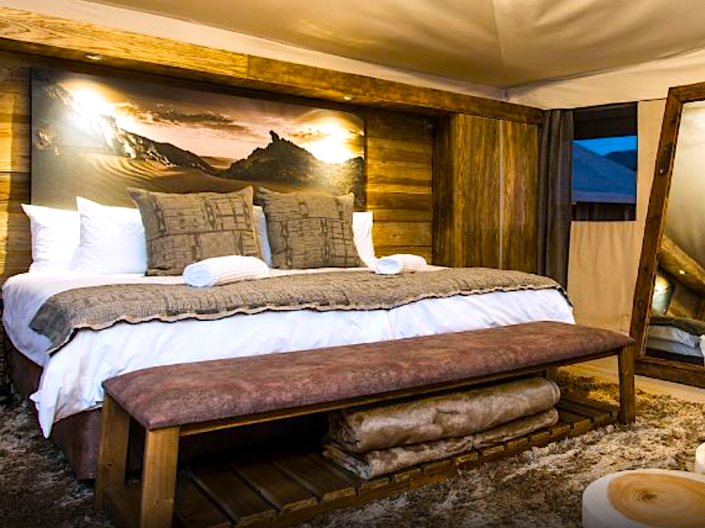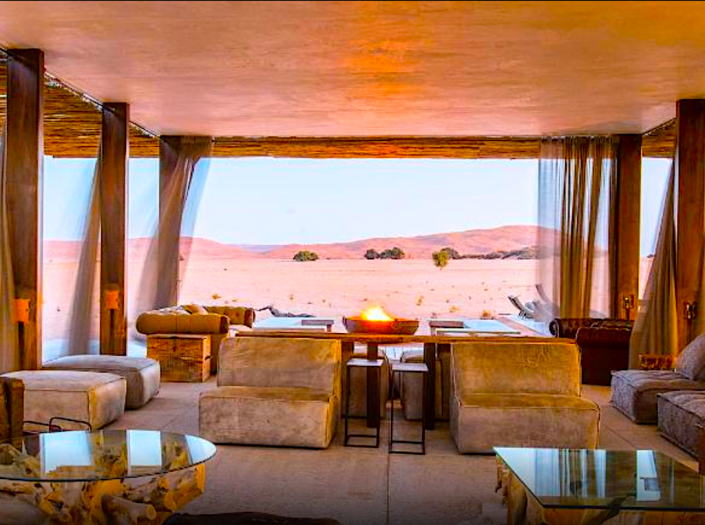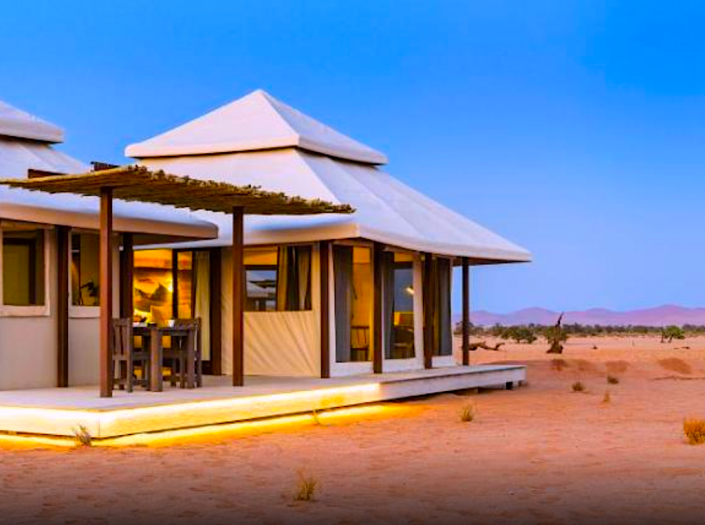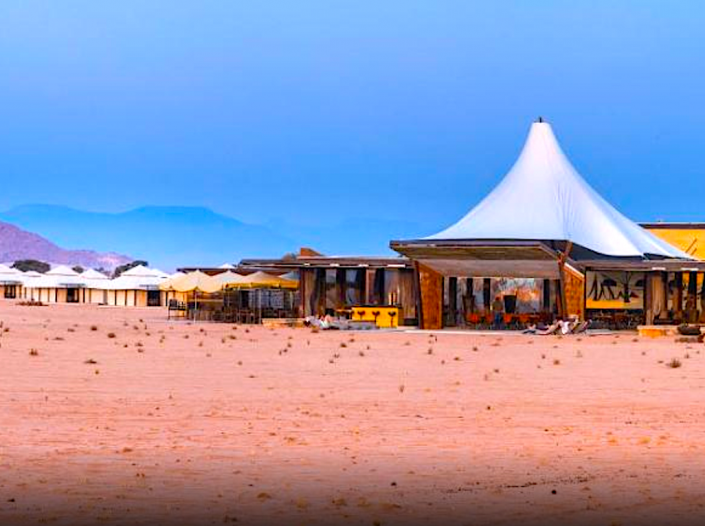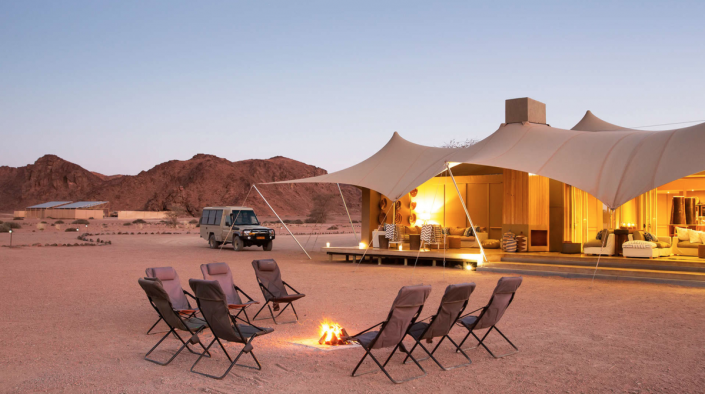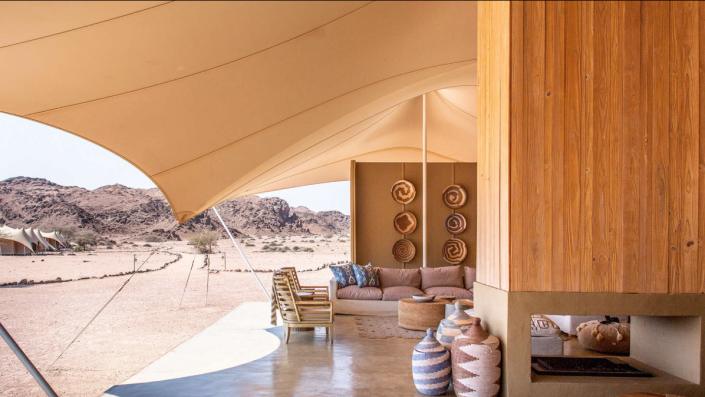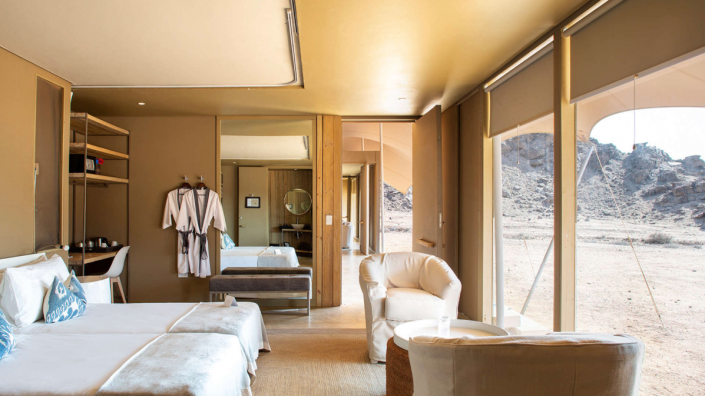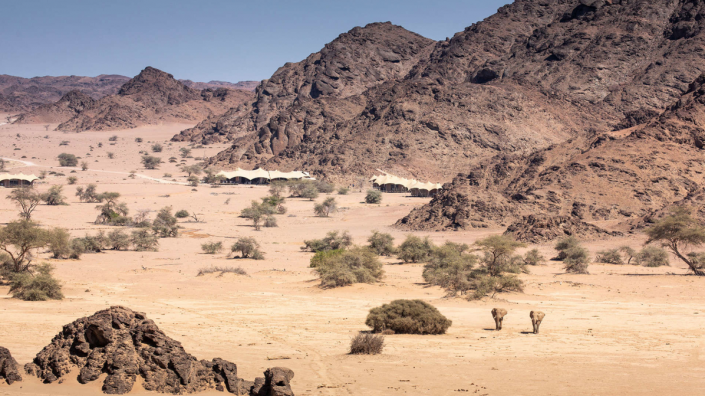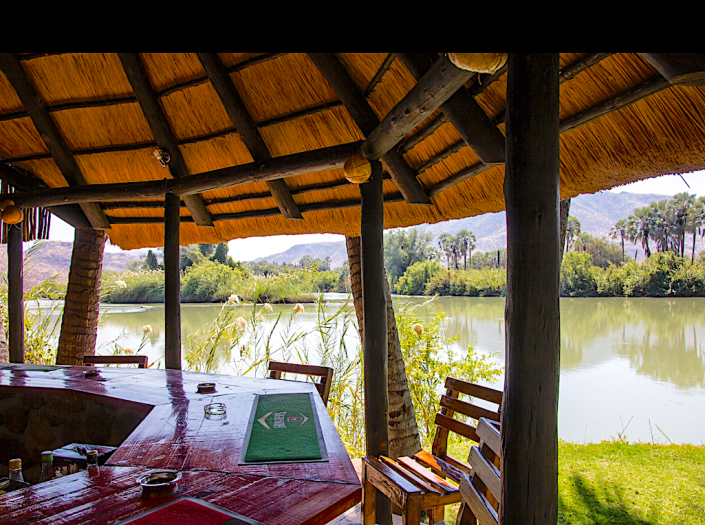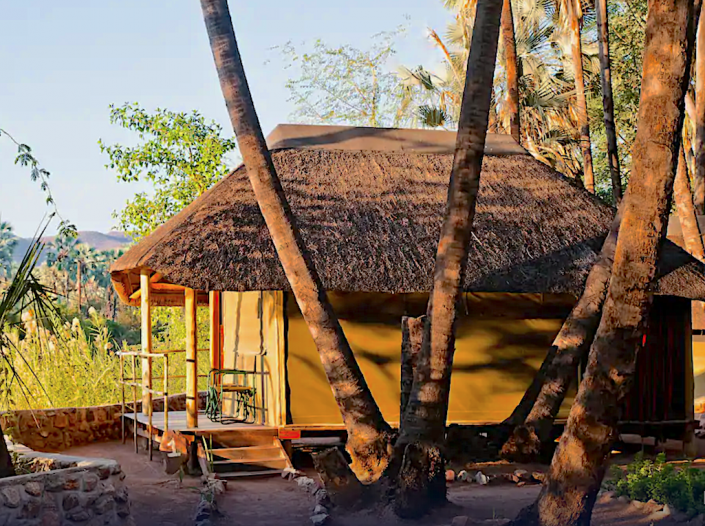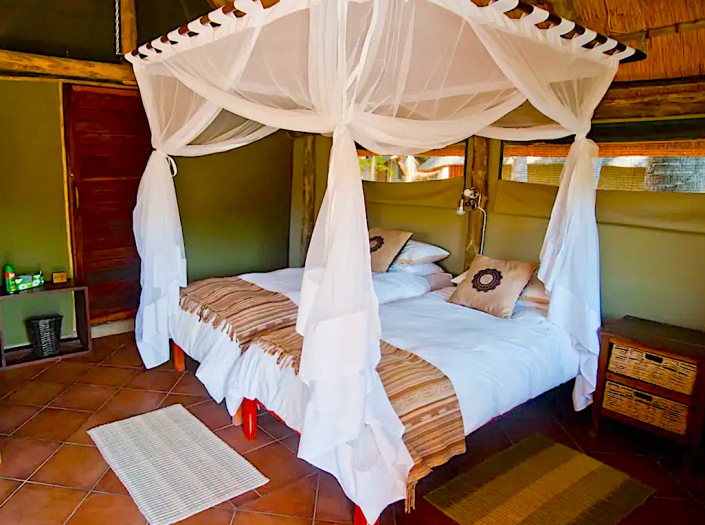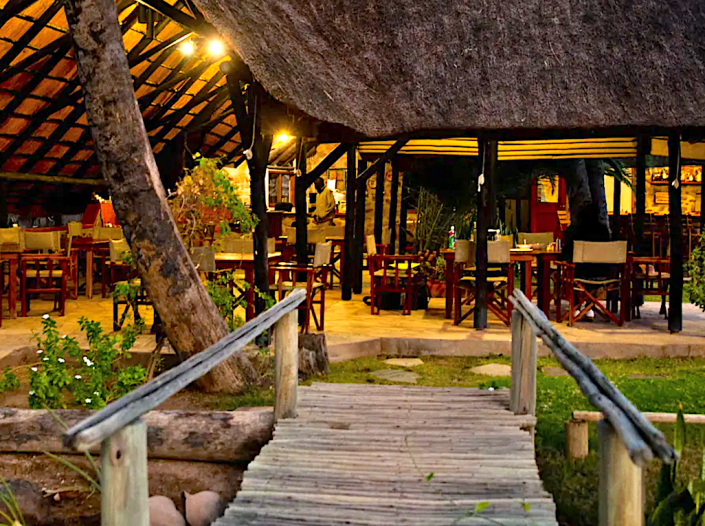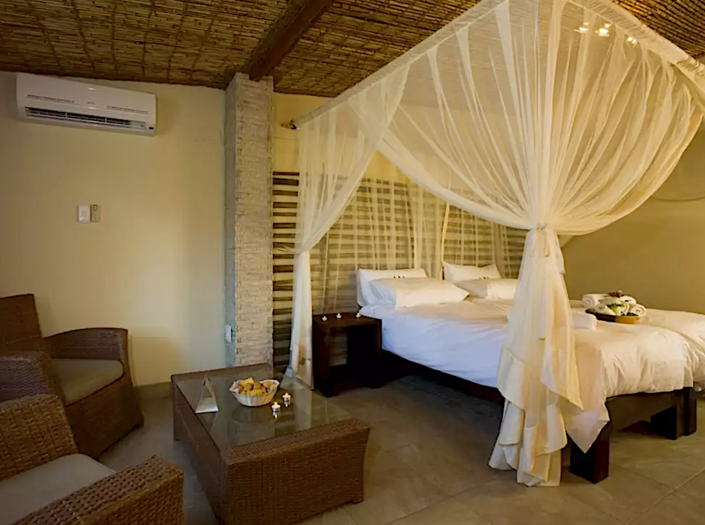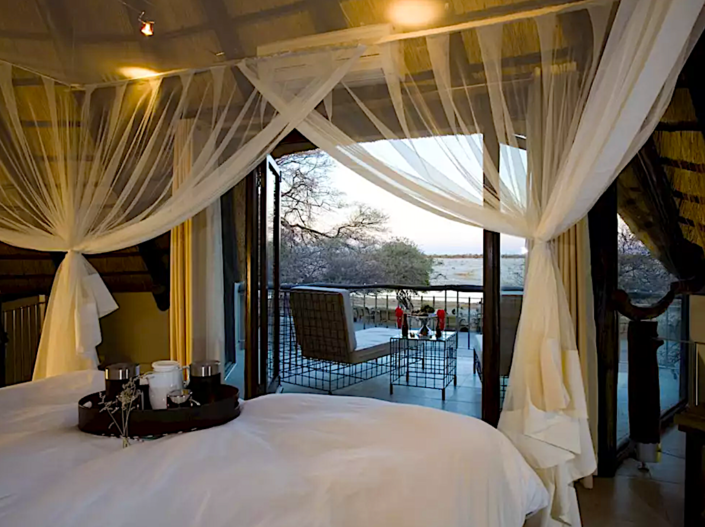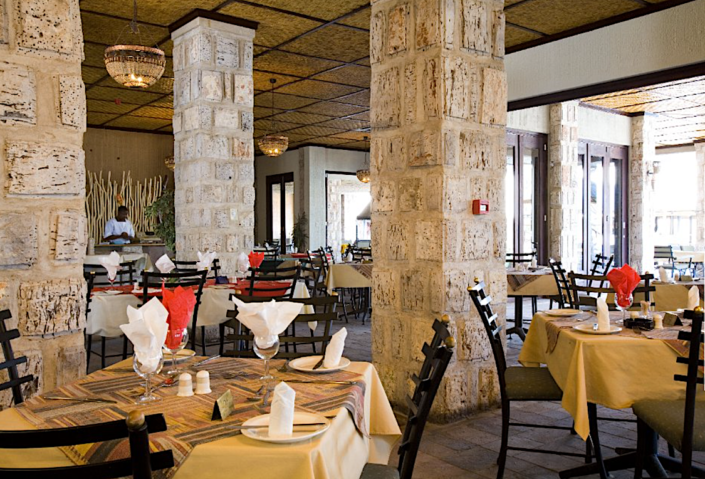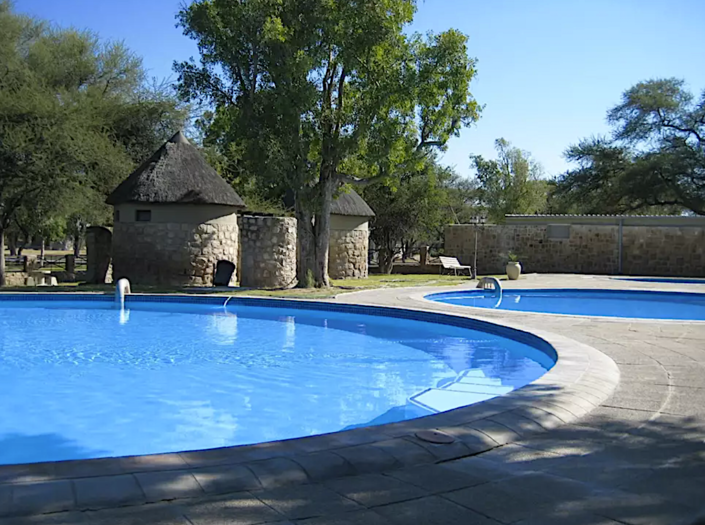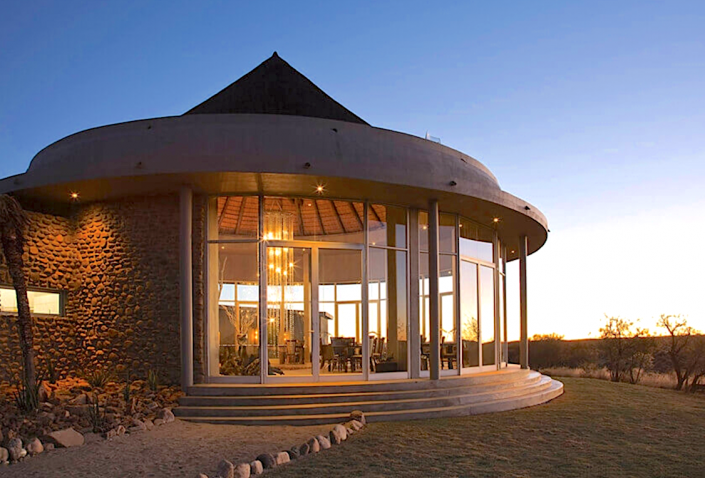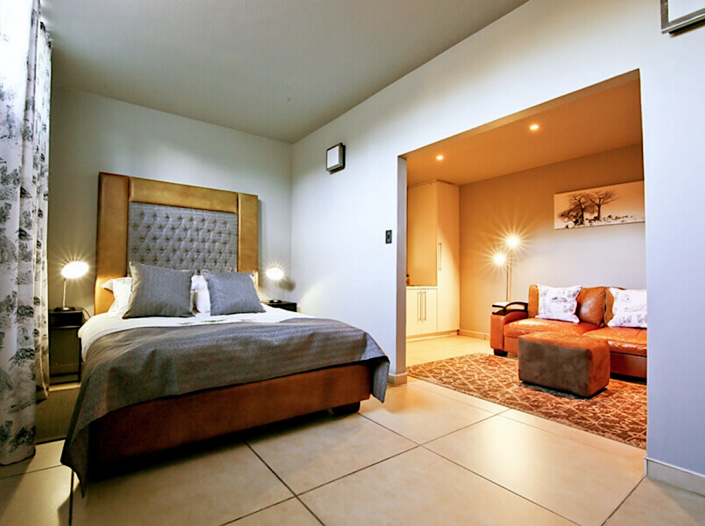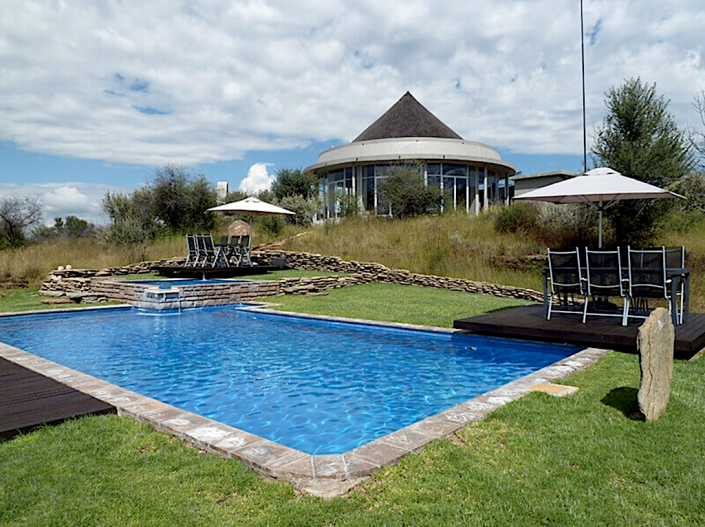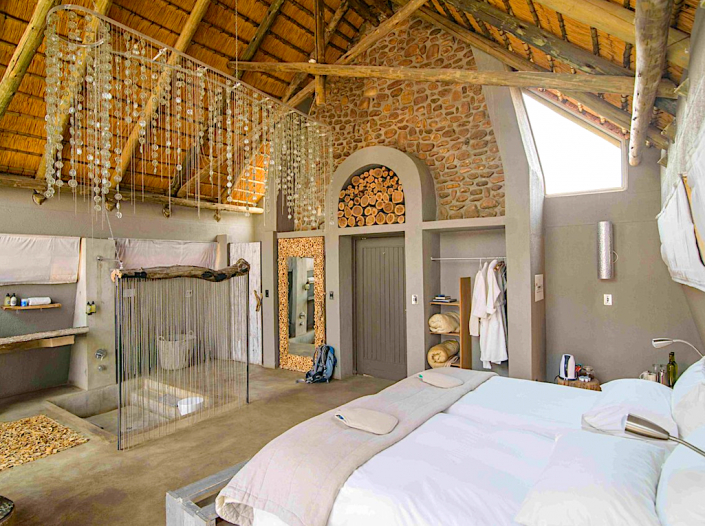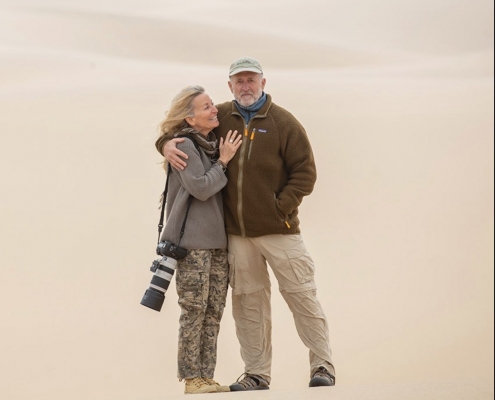


Namibia - The Jewel of Africa
If there are 7 or fewer trip members, a nominal fee of $1000 per person will be added to the total trip cost. Minimum number of persons: 6
Single supplement: $1200 (If you are willing to share a room, please let us know and we will do our best to find a roommate for you for the trip)
At the time of final payment, a slight adjustment may be made to allow for currency fluctuation.
Few countries in Africa offer such a variety of spectacular landscapes: giant sand dunes, high mountains, bizarre rock formations, deep canyons, waterfalls and bush savannah. Some liken Namibia to a "moon-like" landscape because of its surreal remoteness. The Namib is the oldest desert on earth where you can find a lone oryx wandering over red sand dunes and springbok feeding on the sparse vegetation in dry river beds. Namibia with its incredibly beautiful landscapes, also has abundant desert-adapted wildlife and cultural and tribal diversity that makes it one of the most photogenic countries in the world. Theo and Jami, owners of Wild Focus Expeditions, have spent several years in Namibia and will take you to their most favorite and photogenic places during this safari. You will climb the highest sand dunes in Africa and wander among the silent skeletons of 1000 year old acacia trees in a white clay pan surrounded by these giant red dunes.
Further north, desert elephants and other desert-adapted animals will be awaiting you in one of the dry river beds that leads from the interior mountains to the mystic Skeleton Coast. You will be amongst the very few people who are actually allowed to enter the mysterious Skeleton Coast. More sand dunes along the foggy coast will meet your creative eye as you make your way down to the ocean shore where lunch awaits. Flying back to camp after lunch while looking out of the window of our small bush plane will astonish you with the eerie remoteness of this beautiful wild land called Namibia.
After several days in the Skeleton Coast, we will fly you to the furthest northern village of Namibia along the Kunene river in Kaokoland where the Himba people still maintain a life so primitive that it proves how adaptable and resilient humans can truly be. We will have a few days to discover Epupa Falls along the Kunene river and visit Himba villages in the mornings and evenings. This is not the touristy kind of village visit that you hear about, but rather the most authentic experience with the Himba that is possible outside of living with them. When we leave Kaokoland, we continue our journey to the edge of the Etosha Pan, where we will come face to face with Namibia's wild rhinos and other wildlife. Our journey does not end here however. When we leave northern Namibia behind, we will drive south and spend an afternoon tracking rhinos on foot. Our evening, spent with the San bushmen is not the last Namibian experience that we will have. Read the itinerary to learn what other experiences Namibia has in store for you.
Namibia is a jewel for every serious nature lover and photographer. Join us on this diverse, active, exciting and colorful expedition.
Letters correspond to points on the map in the map tab.
Day 1, June 01
Arrive in the capital of Namibia during any time of day. Our group will meet for dinner and we will have a trip briefing.Overnight Hotel Heinitzburg (D)Sossusvlei / Deadvlei
After a lovely breakfast at our hotel overlooking the city of Windhoek, we will transfer to the airport for our chartered flight to the red sands of Sossusvlei in the southern part of the Namib Desert. We will check in to our lodge, have lunch and then drive to Deadvlei, a clay pan that is characterized by dark, dead camel thorn acacias trees. These trees have been dead for almost one thousand years and project eerie shadows in contrast to the stark, white floor of the pan. We will stay past sunset to watch and photograph the light magically change the color of the landscape all around us. Deadvlei is so unusual that it has been nominated as the 8th Wonder of the World.Dead Valley Lodge (B,L,D)Day 2, June 02
Day 3, June 03
Giant Sand Dunes of Sossusvlei
We will waken early this morning so that we can make our way to the biggest sand dunes in Africa before sunrise. Because we are staying at one of the few lodges within the national park, we will be able to arrive at the dunes and Deadvlei early so that we can have them to ourselves. The stillness and the quiet of the desert at this time of day lends a surreal feeling. We will look for oryx and follow their tracks as they climb up and down the dunes in soft morning light. We will climb the dunes as the rising sun causes one side to glow to a fiery red, while the other side is entirely in the shadows. Walking on the top edges of the dunes is exhilarating. You will feel as though you are at the top of the world and because the sky is so clear and blue, you will be able to see for miles and miles. These panoramic landscapes make for photographs that you will want to frame when you get home. There is no place on earth like it. When we are finished following an unsuspecting oryx or taking photographs, then for the sheer fun of it, we will run down the soft sand at the slip face. We will return to the lodge for a hot breakfast, rest, and then lunch. In the afternoon, we will return to experience the tallest sand dunes in the world at sunset - they will look very different at this time of day. The Namib-Naukluft National Park is the largest park in Africa and the fourth largest in the world. We hope to see gemsbok (oryx) feeding on the sparse vegetation or walking across the dunes. After sunset, we will make our way back to our lodge in time for dinner. After dinner, we can walk just outside of our lodge to experience one of the most brilliant night skies in the world. Due to low light pollution and cloudless night skies, the dry desert air and low humidity make for the most perfect conditions for star gazing and nighttime photography.Dead Valley Lodge (B,L,D)Skeleton Coast
Since this is our last morning in Sossusvlei, we can opt to sleep in or visit Deadvlei and the dunes early in the morning for the last time to enjoy the stillness and colors of the Namib desert. We will have packed the night before and so upon returning to the lodge, we will drive to a private airstrip where we will board our private chartered flight.Today we fly to the Skeleton Coast which is the northern part of the Atlantic coast of Namibia. It was referred to by Portuguese sailors as "The Gates of Hell" and by the San (Bushmen) as "the Land God Made in Anger". The area's name comes from the whale and seal bones that once littered the shore from the whaling industry. But today, there are skeletal remains of shipwrecks caught by offshore rocks and dense fog. At one time, the remains of more than 1000 ships of various sizes littered the shores and several are still found on the beaches today.Namibia has declared over 6000 square miles of the Skeleton Coast as a national park that is off-limits to the general public. The eco-system is extremely fragile and has been the subject of a number of wildlife documentaries concerning adaptations to the extreme aridity. The plant and insect species of the sand dune systems depend on the thick sea fog which engulf the coast. The fog provides desperately needed moisture.The river beds are home to desert-adapted elephants, baboons, giraffes, lions, black rhino, springbok, gemsbok/oryx, and rare brown hyenas.We will spend the next three days in the mystical and spectacular Skeleton Coast National Park. We will explore the dry river beds that are home to these unusual desert-adapted animals. We will learn how they survive in such an inhospitable environment. Desert-adapted lions and elephants are of key interest.After obtaining special permits from the Namibian government to work in the Skeleton Coast photographing, Jami and Theo spent months in this area and learned firsthand about the challenges of surviving in such a harsh environment. They also worked with the elephants for many weeks and spent time tracking lions with Dr. Flip Stander, a lion biologist who has dedicated his life protecting and saving these unique and endangered animals. To see a preview of "Vanishing Kings - the desert adapted lions of Namibia's Kaokoveld", click on this YouTube link: https://www.youtube.com/watch?v=vQqgnDr0LlsHoanib Skeleton Coast Camp (B,L,D)Day 4, June 04
Day 5 - 6, June 05 - 06
The Skeleton Coast
The next two days will be spent exploring the beauty of the Skeleton Coast. Our focus will be desert-adapted elephants - perhaps they will remember Jami and Theo who used to talk to them day after day. They are more aggressive than their savannah cousins, are a bit smaller in body size and have larger feet - all in order to adapt to the environment. With luck, we hope to find the resident pride of desert-lions as well.We will take one day to drive down to the Atlantic coast. It is an exciting and beautiful adventure-filled day. There are interesting things to see as we meander down the dry Hoanib river bed towards the ocean.We will take our time in the Hoanib and if the weather and fog are permitting, we will return to camp by bush plane in time for dinner.Hoanib Skeleton Coast Camp (B,L,D)Epupa Falls, Kaokoland
This morning we will have our last game drive in the Hoanib river or we can relax in our beautiful camp before we depart. After our chartered flight to the border of Namibia and Angola, the next few days will be spent at Epupa Falls, a series of waterfalls spread over half mile. Epupa is a Herero word for "foam" referring to the foam created by the falling water.There is little tourism here as this area is difficult to reach (4WD is required from the nearest city of Opuwo). It is an unspoiled environment with fig trees, baobabs and colored rock walls.While we are here, we will learn about the Ovahimba people, an indigenous semi-nomad tribe that lives in north-western Namibia. They live predominantly off of their livestock. They breed sheep, goats and cattle which provide milk and meat for the tribe. We will take flour, sugar, salt and maize to the tribes when we visit spending early mornings and the late afternoons with them in their villages - the best times for the sun to show off their beautiful skin and elaborate hair style. Being with the Himba traditions and way of life will be like stepping back in time.Because this area is off of the beaten path, this is the best lodge available and is a standard quality lodge. It is clean but basic.Omarunga Lodge (B,L,D)Day 7, June 07
Day 08, June 08
Epupa Falls, Kaokoland
The morning and late afternoon will be set aside to visit Himba villages where we have the freedom to photograph the people and their basic dwellings. Even during this relatively short time we will be able to study their culture and traditions that still thrive today. Especially interesting is the hairstyle and jewelry of the Himba girls and how they play a significant role indicating age and social status of the community. They are a polygamous people with husbands having an average of two wives at the same time. Because of the harsh desert climate in the region where they live and the seclusion from outside influences, the Himba have maintained and preserved their traditional lifestyle.In the afternoon, we will have time to walk around the Epupa Falls and the baobab trees along the cliffs looking across the Kunene River to Angola. Our one day here will be full of experiences that will be with us for the rest of our lives.Omarunga Lodge (B,L,D)Etosha National Park
After breakfast, our last chartered flight of this safari will take us to Etosha National Park. We will stay the next three nights inside Etosha at a lodge situated on an active water hole drawing lots of game including endangered black rhino.
Okaukuejo is located less than ten minutes from the southern entrance to the park. During our stay here we will take game drives through Etosha National Park but also spend time at this very famous and active water hole. Okaukuejo is considered the best water hole in Etosha and the best place to photograph wildlife. All though this is far from a luxury resort, it is without a doubt ideally situated. The basic yet comfortable accommodations are outweighed by the wildlife interaction literally day and night .
Okaukuejo Camp (B,L,D)
Day 09 -11, June 09 - 11
Day 12, June 12
Na’an ku se
This morning we will leave Okaukuejo early after breakfast and transfer by road south towards Windhoek. There is a very busy, action-packed next 24 hours in store for you. We will eat our lunch en route in effort to save time because this afternoon we are going to track white rhinos on foot. This will be the perfect experience to learn about their behavior and the poaching threat that is raging across Africa. After our tracking time in the field, we will have dinner at our lodge, but then head out immediately following dinner to a San Bushmen village.
The San people are indigenous hunter-gatherers that are the first nations of Southern Africa. They are spread between Botswana, Namibia and South Africa in the Kalahari with the greatest population in Botswana (55,000) followed by Namibia (27,000). The San story is a sad story with diamond mining in the 1980s being the most recent threat to their existence. This evening will be about them as we spend time with them around the fire beneath the stars. They will tell us their stories about stars, animals and the universe and we will hear them talking in their Khoisan language that is unique for its various "clicking" sounds.
The San tribes are the ultimate conservationists. They are well-known for the profound connection that they have with the land and the animals. They have intimate knowledge of the natural world and they have maintained a delicate balance with the environment for a millennia.
The lodge where we are staying tonight is a wildlife sanctuary that runs carnivore conservation research programs to help protect and conserve large wild carnivores and reduce human-wildlife conflict in Namibia. They help to relocate problem animals to safer areas in order to reduce the number that are needlessly shot and killed. They are working to re-establish a cheetah population in Namibrand and Namib Naukluft which currently have very low cheetah populations. They are also working with farmers to dispel myth that all cheetah, leopard and lion are a danger to livestock.
In addition, the sanctuary accommodates orphaned and injured animals that cannot be released safely back into the wild including leopards, lions, cheetah, wild dogs and baboons. They work the San community to provide education for children.
Naankuse Wildlife Sanctuary Lodge (B,L,D)
Windhoek, Flight Home
All though this is our last morning in Namibia, the excitement continues as we will wake up bright and early - that is, if we want to spend time with some creatures who also wake up at the crack of dawn. As the sun rises in Namibia, this morning will gift us with an unusual and fun adventure as we witness the hilarious antics of meerkats (surikats). They are without a doubt the bushveld's most adorable residents. When they emerge from their dens in the ground (around 6:15am) in order to sit and warm up in the brilliant morning sunshine, we will sit with them quietly on the ground and just enjoy their sweet and comical behavior before they start their busy day searching for food. We cannot promise that they will come out as sometimes nature has different ideas, but we hope for a few hours of time with these adorable little sentries of the bushveld.
Because we have a busy morning planned, we are bringing a packed breakfast because the next four hours is giving us the opportunity to spend time with the founder and owner of this wildlife reserve. We are going to spend time with her and go behind the scenes for an intimate and exclusive view of the workings of a wildlife sanctuary. Insight will be gained into the life of the myriad of animal species currently being cared for. We are going to learn about the world of research being carried out at the moment and we will become smitten with these gorgeous sanctuary orphans. Would you like to bond with baby baboons (there's nothing like it)? Then come with us to become immersed in the world of Namibian wildlife.
This will end our time in Namibia and we will leave here directly for the airport in Windhoek so that you can connect with your evening flights home. Please do not book your flights home any earlier than 5pm.
We, at Wild Focus Expeditions, hope that you have become enthralled with the southern Jewel of Africa - Namibia. We hope we are sending you home with lots of new beliefs, thoughts, knowledge and a full heart. Oh, and lots of gorgeous new images for your portfolio and your walls!!!
Trip End (B,L)
Day 13, June 13
Included
- Accommodations for 12 nights on double-share/single room basis with private facilities.
- All land and air transfers in Namibia
- All game drives
- Transportation and exclusive use of game drive vehicles
- National park and conservation fees
- All meals
- Selected beverages where mentioned above
- Mineral water during game drives
- Experienced English-speaking drivers/guides
- Wild Focus Guides
- Domestic chartered flights where mentioned above with extra freight seats to allow for excess weight for camera gear
Not Included
- International airfare to and from Windhoek
- Change of itinerary
- Visa fees
- All beverages (unless where mentioned as included)
- Any items of personal nature such as beverages, laundry, telephone calls
- Tips / gratuities for your driver / guide and camp / lodge staff
- Travel/medical insurance
- Any extras not mentioned in the included list such as extra meals and activities
Most of our safaris will be in permanent to semi-permanent tented camps. All of our tents are en suite, are designed to the highest standards, and are comfortable with hot showers and toilets. Our camps will have separate lounge and dining areas which add to the excitement and ambiance of being on safari. It should be noted, however, that there are no fences around the camps, and animals of all sizes are sometimes encountered within the camp boundaries. Please be assured that you will be safe at all times. Our Expeditions Leaders and camp staff will be there to assure your safety.
In May and June, temperatures are very comfortable. Mornings can be quite cool to cold while warming up as the day continues. Nights can be cold and midday temperatures range from 70ºF (20ºC) to 80ºF (26ºC). Our Handbooks provide more detailed information about clothing and trip preparation.
We recommend that our travelers bring an adventurous spirit, as you will often enjoy the closest animal encounters and the most beautiful landscapes in Namibia.
Expedition Leaders
Jami Tarris & Theo Allofs
Jami and Theo, owners of Wild Focus Expeditions, have spent a total of more than 2 years traveling and photographing in Namibia and know this country like their own backyard. Namibia is one of their most favorite countries. It is a photographer's and nature lover's paradise.
Wild Focus Expeditions provides specialized, small group photography tours. Our photography expeditions are designed to get participants into distinctive, engaging locations around the world at the optimum times for photography. Our photo tours are created by our team of photographers who want to experience and photograph the world's top wildlife, nature and traditional cultures locations.
NEWSLETTER SIGNUP
Our quarterly newsletters are the best way to stay up on the latest news and information for both our current and upcoming expeditions.

